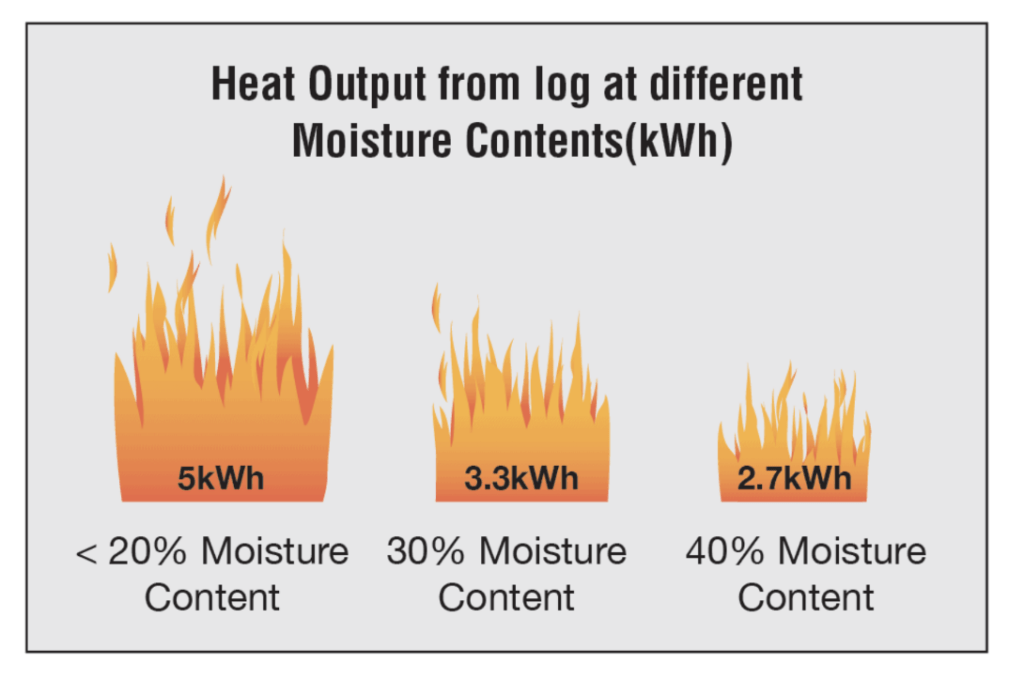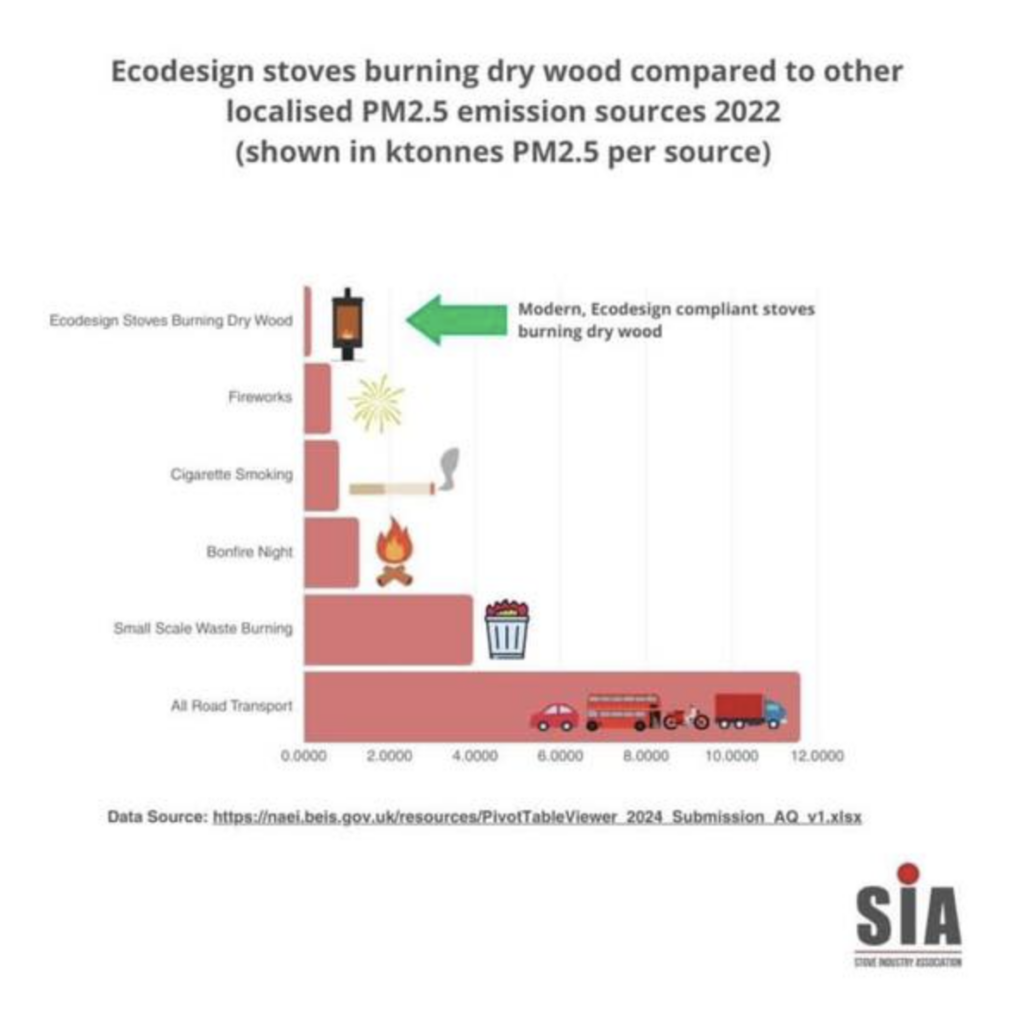The NAEI is short for the National Atmospheric Emissions Inventory. The UK National Atmospheric Emissions Inventory is developed and maintained by various businesses and is funded by various government departments including Defra. The NAEI estimates annual pollutant emissions from 1970 to date. The NAEI collect and analyse information from a range of sources. The information they produce provides useful insight into best practice for burning wood and how to further reduce emissions from domestic burning. This is something we are keen to share, especially with misinformation around burning wood circulating in some media sources.
The Broad Brush Approach:
In recent years, some media outlets have unfairly portrayed ‘burning wood’ with a very broad brush, classing all methods of burning with the same (rather bad) brush. We have reported on this numerous times. In reality, there is a vast difference in efficiency levels between burning wood on an open fire, for example, and on an Ecodesign stove. However, misinformation is still out there, misleading the public.
Drilling Down to Detail:
‘Domestic burning’ is a very broad description of many heating and cooking methods. In 2022, which was a record sale for wood-burning stoves, the total PM2.5 emissions from domestic burning dropped by 4% compared to 2021. Furthermore, emissions from domestic wood burning specifically dropped by 2.7%. In 2022, research from NAEI showed that 13.3% of total UK PM2.5 emissions were from open fires. In comparison, an Ecodesign stove accounted for just 1.8%.
The type of fuel, in terms of ‘domestic burning’, plays a huge part in determining emissions. So, with this in mind, just looking at wood alone, from NAEI research, open fires account for 9.8% of UK PM2.5 emissions. Ecodesign stoves just 1.4%. Burning wood, which is dry (or seasoned), means it has a moisture level of no more than 20% is significant, as data shows that just 0.3% of PM2.5 came from Ecodesign stoves if the wood is classed as dry. You can burn ‘wet’ wood, but this increases emissions greatly.

These figures clearly start to explain how a broad brush approach to measuring pollution simply does not stand up.
To give further context, NAEI also give an outline of other pollutants:
1. Road transport PM2.5 emissions were 66.7 times greater than Ecodesign stoves burning dry wood in 2022.
2. Smoking Cigarettes caused 4.7 more PM2.5 compared to Ecodesign stoves burning dry wood
3. Small-scale waste burning produces 22.7 times more PM2.5 emissions compared to Ecodesign stoves burning dry wood.
4. The PM2.5 emissions created on bonfire night are 7.4 times higher than Ecodesign stoves burning dry wood.

How you can lower your emissions:
As a stove user, you have the power to be as efficient as possible (or not, as the case may be). An Ecodesign stove is designed to be incredibly efficient, but you need to make sure you are using it in the right way. Here are a few tips to help:
Do:
1. ONLY use quality clean, dry hardwood or smokeless fuel. Kiln-dried wood is great.
2. check your wood is less than 20% moisture inside the log when split. Use a moisture meter..
3. get the flue or chimney swept and checked at least annually.
4. use the stove gloves and tools provided as needed.
5. open the top air control (air wash) to help keep the glass clean.
6. warm up the stove fully on the first loads of fuel before reducing the air controls to a lower position.
7. keep your stove clean inside & out
8. purchase and use a CO alarm.
Don’t:
1. leave the stove unattended with the air controls wide open.
2. over fire your stove by overloading with fuel or leaving the air controls too far open for too long it will damage it.
3. let any metal part of the stove glow red hot (including the baffle plate) – this is over firing and will damage your stove!
4. be concerned about a haze or smoke off the stove when new, this is paint curing and any remaining protective oil film evaporating off. Ventilate well.
5. cover or remove your CO alarm from the room, it is there for your protection.
6. burn rubbish, painted or preserved wood in your stove, it can cause damage, excessive smoke and is illegal.
7. close the stove air controls down too quickly before the chimney and stove have properly warmed up, it can stifle the fire and cause smoke and tar build up.
8. store logs or coal right next to your stove – they can overheat!
A modern Ecodesign stove is a clean and sustainable way to heat a room. They are vastly different to other less efficient methods of burning such as an open fire. But you need to take control and make sure you are using the stove in the way it was intended.
View the range of our wood-burning stoves here.








